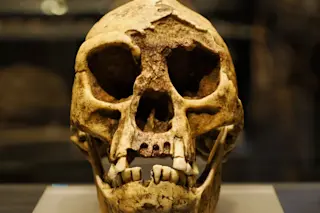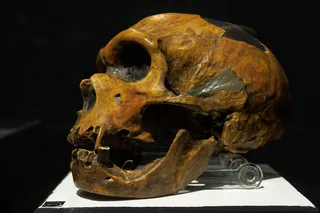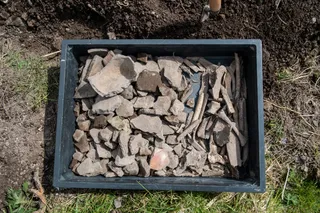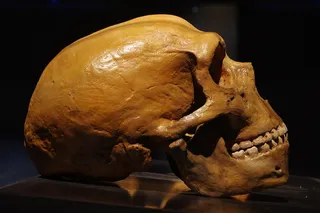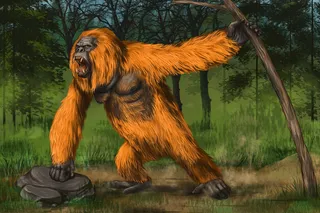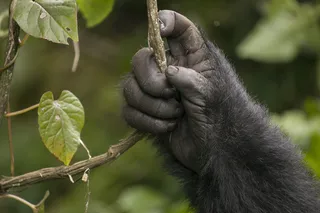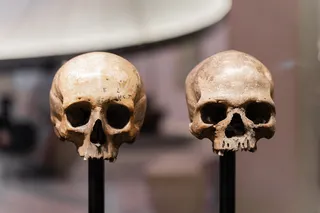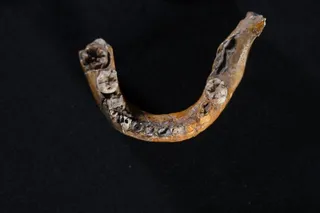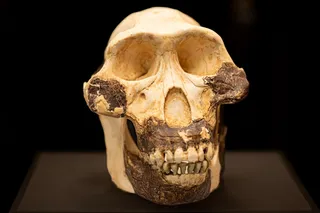Millions of years ago, our ancient ancestors transitioned from the forests to the grasslands of Africa, where their need for new food sources led to their consumption of grasses.
But recent research suggests that the hominins learned to love these plants, including their grains and their underground organs, thousands of years before their teeth had transformed to eat them effectively. In fact, it took a long time for the hominins’ tastes and teeth to align, with their molars evolving over time, shrinking and stretching, to make munching through tough grassy plants easier.
Reported in Science, the results reveal that behavioral adaptations have prompted physical adaptations in hominins through the evolutionary process of “behavioral drive.” This means that the hominins were able to adapt to their new environment through the transformation of their diet before the transformation of their teeth — an ability that could have contributed to their success.
“We can definitively say that hominins were quite flexible when it came to behavior,” said Luke Fannin, a study author and a researcher at Dartmouth College, according to a press release. “And this was their advantage.”
Read More: Chimpanzees Could Answer Why Humans Evolved to Walk Upright
Driving Human Evolution
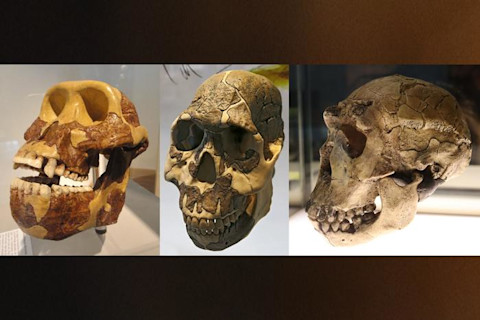
The researchers report that hominin teeth, especially molars, became smaller and longer over millennia to accommodate a growing diet of tough grass-like plants known as graminoids and their underground storage organs. They found that the shift toward grasses began approximately 3.8 million years ago, with the distant human relative Australopithecus afarensis (left). About 2.3 million years ago, the early human Homo rudolfensis (center) gained regular access to carbohydrate-rich underground plant organs such as tubers, bulbs, and corms. But this dietary shift outpaced tooth evolution until about 2 million years ago, when species such as Homo ergaster (right) exhibited a spurt of change in tooth size and shape better suited to eating and breaking down cooked plant tissues to derive their nutrients. (Image Credit: L to R: Public domain; Don Hitchcock; Fernando Losada Rodríguez (rotated))
L to R: Public domain; Don Hitchcock; Fernando Losada Rodríguez (rotated
Behavioral drive, or the ability of behavioral adaptations to propel physical adaptations, is an important process in evolution. But detecting it can be challenging in fossil species, as their behaviors aren’t fossilized, leaving the interpretation of their behavior dependent on the interpretation of their morphology.
“Anthropologists often assume behaviors on the basis of morphological traits,” said Nathaniel Dominy, another study author and a professor at Dartmouth College, according to a press release. “But these traits can take a long time — a half-million years or more — to appear in the fossil record.”
Searching for the traces of behavioral drive in human evolution, the researchers analyzed the carbon and oxygen isotopes on the teeth of hominins and other primates, including those from one lineage of terrestrial monkeys and another of arboreal monkeys. Left over from the meals of these animals, the carbon and oxygen isotopes would provide behavioral evidence that would be interpreted independently of morphological evidence.
In this case, the isotopes would show whether the hominins or the other primates ate grasses before their teeth had evolved into a shape or structure that suited the consumption of these plants.
“These chemical signatures are an unmistakable remnant of grass-eating," Dominy added in the release, “that is independent of morphology.”
Read More: Some Early Hominins Evolved to Walk Upright While Still Living in Trees
An Adaptive Lag
The carbon and oxygen isotopes showed that the hominins switched from fruits and flowers to grasses around 3.8 million years ago, and then from the grains of grasses to the underground organs of grasses around 2.3 million years ago. But it wasn’t until 700,000 years after their transition to these underground organs — foods such as tubers, bulbs, and corms — that the hominins’ teeth finally took on the smaller, longer structures that suited the consumption of these plants.
According to the researchers, the transition from above-ground to underground grasses was an advantageous one, giving hominins more nutrients with less work, as they could dig up their meals without much competition from other animals.
“We propose that this shift to underground foods was a signal moment in our evolution,” Fannin said in the release. “It created a glut of carbs that were perennial — our ancestors could access them at any time of year to feed themselves and other people.”
Meanwhile, the primates made the switch to grasses around 4.2 million and 3.4 million years ago, but didn’t transition from above-ground grasses to underground grasses with the hominins.
“One of the burning questions in anthropology is what did hominins do differently that other primates didn't do?” Dominy added in the release. “This work shows that the ability to exploit grass tissues may be our secret sauce.”
Article Sources
Our writers at Discovermagazine.com use peer-reviewed studies and high-quality sources for our articles, and our editors review for scientific accuracy and editorial standards. Review the sources used below for this article:



